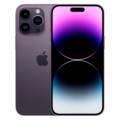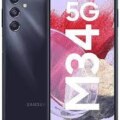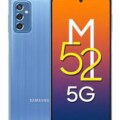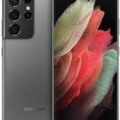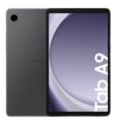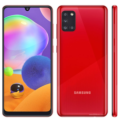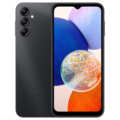- Home
- All Products
- Mobiles
- Apple iphone 3G price & specs
Apple iphone 3G price & specs
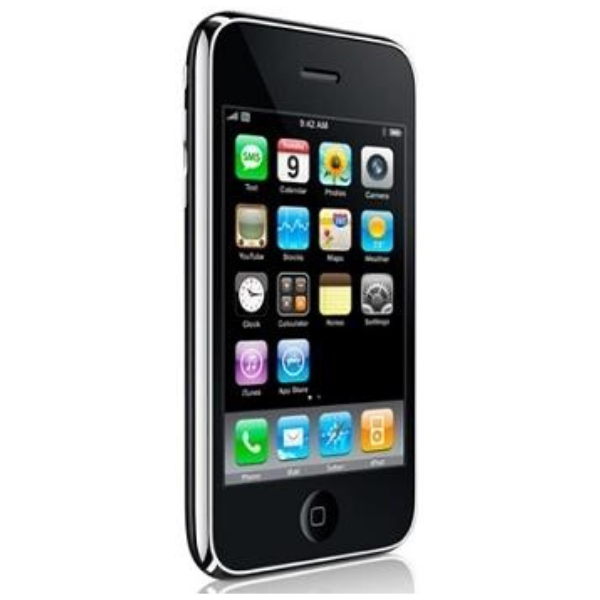

-
Processor: ARM 11 620 MHz
-
RAM: 128 MB
-
Storage: 8GB and 16GB
-
Display: 3.5-inch TFT LCD display
-
Camera: 2 Mega Pixels
-
Battery: iOS 2.0 upgradable to iOS 4.2.1
Specs
General
| Device Type | Smart Phone |
| Model | Iphone 3G |
| Released | 09 June, 2008 |
| Status | Discontinued |
Network
| 2G Network | GSM 850 / 900 / 1800 / 1900 |
| 3G Network | (HSDPA 850 / 1900 / 2100) |
| SIM <strong>SIM</strong> (Subscriber Identity Module) is a small card that contains mobile network subscriber's account information. This allows the phone using the card to attach to a mobile network. The SIM card is most commonly associated with GSM and UMTS mobile networks. Moving a SIM card from one phone to another allows a subscriber to switch mobile phones without having to contact their mobile network carrier. SIM cards can also be used by a phone to store limited amounts of data, such as phone numbers and text messages. | Micro SIM |
Design
| Type <strong>Design Type</strong> called form factor refers to a mobile phone's size, shape, and style as well as the layout and position of major components of phone. There are three major form factors seen in mobile phones => bar phones, folding phones and sliding phones. | Bar |
| Dimensions | 115.5 x 62.1 x 12.2 mm |
| Weight | 133 g |
| Colors | Black, White |
Display
| Display Type <strong>Display Technology => </strong> A number of display technologies and types used in mobile phones => TFT (Thin Film Transistor), IPS (In-Place Switching), OLED (Organic Light Emitting Diode), AMOLED (Active-Matrix Organic Light-Emitting Diode), Super AMOLED (an even advanced version of AMOLED), Resistive Touchscreen (Resistive touchscreens contain two layer of conductive material with a very small gap between them which acts as a resistance), Capacitive Touchsceen (Capacitive touchscreen technology consists of a layer of glass coated with a transparent conductor) | 16M colors, Multi-touch input |
| Size | 3.5 inches |
| Resolution | 320 x 480 pixels |
| Display Colors <strong>Display Colors</strong> is refers to the number of different shades of colors that the screen is capable of displaying => 64K colors, 256K colors and 16 million colors, Obviously 16M is highest available range of colors and better than others. | 16M colors |
| Pixel Density <strong>Pixel Density (PPI)</strong> is refers to the concentration of pixels on a particular display, measured in pixels per inch (ppi). Pixel density is calculated by dividing the diagonal pixel resolution of a display by its diagonal size, higher pixel density better display quality. | 163 ppi pixel density |
| Features | Accelerometer, proximityBrowser,HTML (Safari) ,Audio/video player TV-out Organizer Document viewer Photo viewer Predictive text input |
Software
| Operating System <strong>OS => </strong> Every computer system run on a base software called Operating System (OS). Operating System controls all basic operations of the computer (such as smartphone, PDAs, tablet computers and other handheld devices). The Operating System allows the user to install and run third party applications (apps), apps are used to add new functionality to the device. | Mac OS X v10.4.10 |
| User Interface <strong>UI</strong> or user interface of a device is the look and feel of the on-screen menu system. How it works, its color scheme, how it responds to button presses, all of these things are part of the user interface. | iOS UI |
Hardware
| CPU <strong>CPU</strong> (Central Processing Unit) mostly known as processors, CPU processes instructions in order to carry out certain functions that make your device operate properly. Processors are often described as the brain of computers, smartphones and tablets, Smartphones and tablets rely on processors to carry out their every task, Processors are an incredibly important factor in selecting any type of computing device, including your smartphone. | PowerVR MBX |
| RAM (Memory) <strong>RAM</strong> (Random Access Memory) is a type of computer memory that can be accessed randomly, any byte of memory can be accessed without touching the preceding bytes that allows information to be stored and accessed quickly from random locations. RAM is the most common type of memory found in computer systems, smartphones, tablets and other electronic devices. | 512 MB |
| Internal Storage <strong>Internal Storage</strong> is a data storage space (flash memory) mostly used in smartphones, tablets and other electronic devices where operating system, apps, music, photos, videos, files and other user data Is stored. | 8GB |
| Card Slot <strong>Memory Card Slot</strong> is a special slot for inserting a memory card. Memory cards allow you to expand the phone's built-in memory, A memory card (sometimes called a flash memory card or a storage card) is a small storage medium used to store data such as text, pictures, audio, and video, for use on small, portable or remote computing devices such as mobile phones, mp3 players, digital cameras. | |
| Sensors <strong>Sensors</strong> are electronic components that detects and responds to some type of input from the physical environment. The specific input could be light, heat, motion, moisture, pressure and location, The output is generally a signal that is converted to use in computing systems, a location sensor, such as a GPS receiver is able to detect current location of your electronic device. | Accelerometer, Light |
Camera
| Primary <strong>Camera</strong> is able to capture photographs and usually videos, The most important characteristics of a camera are the resolution (measured in megapixels), lens focus type (fixed or automatic), higher megapixel cameras are known to capture higher quality photos, but not always a good measurement of the photos quality. | 2 MP, 1600x1200 pixels |
| Secondary | No |
| Video | Yes |
| Camera Features | No |
| Flash <strong>Flash Light => </strong> There is commonly two types of flash lights are used in camera mobile phones, LED Flash (LED flash offers lower power consumption with drive circuitry that takes up very little room, LEDs can be strobed faster than any other light source), Xenon Flash (xenon flash produces an extremely intense full-spectrum white light for a very short duration) |
Connectivity
| Wi-fi <strong>Wi-Fi</strong> is a popular wireless networking technology using radio waves to provide high-speed network connections that allows devices to communicate without cords or cables, Wi-Fi is increasingly becoming the preferred mode of internet connectivity all over the world. | Wi-Fi 802.11b/g |
| Bluetooth <strong>Bluetooth</strong> is a wireless communications technology for exchanging data between mobile phones, headsets, computers and other network devices over short distances without wires, Bluetooth technology was primarily designed to support simple wireless networking of personal consumer devices. | v2.0 |
| GPS <strong>GPS</strong> The Global Positioning System is a satellite-based radio navigation system, GPS permits users to determine their position, velocity and the time 24 hours a day, in all weather, anywhere in the world, In order to locate your position, your device or GPS receiver must have a clear view of the sky. | Yes + A-GPS support |
| Wi-fi Hotspot | |
| USB | Yes |
| NFC <strong>NFC</strong> (Near field communication) is a set of standards for smartphones and similar devices to establish peer-to-peer radio communications with each other by touching them together or bringing them into proximity, usually no more than a few inches. | |
| Wireless Charging <strong>Wireless Charging</strong> (Inductive Charging) uses an electromagnetic field to transfer energy between two objects. This is usually done with a charging station. Energy is sent through an inductive coupling to an electrical device, which can then use that energy to charge batteries or run the device. |
Data
| GPRS <strong>GPRS</strong> (General Packet Radio Service) is a packet oriented mobile data service on the 2G and 3G cellular communication system's global system for mobile communications (GSM), Generally, GPRS is used for the purpose of wireless data transfer, such as sharing pictures and videos or browsing the Internet via a mobile phone connection. | |
| EDGE <strong>EDGE</strong> (Enhanced Data GSM Environment) is a wireless network technology generally considered the next step in the 2G network offers data transfer rates up to four times faster than ordinary GSM networks, Generally, EDGE is used for the purpose of wireless data transfer, such as sharing pictures and videos or browsing the Internet via a mobile phone connection. | |
| Speed | HSDPA, 14.4 Mbps; HSUPA, 5.8 Mbps |
Messaging
| SMS <strong>SMS</strong> (Short Messaging Service) is a text messaging service component of phone, Web, or mobile communication systems. It uses standardized communications protocols to allow mobile phone devices to exchange short text messages over the networks. | Yes |
| MMS <strong>MMS</strong> (Multimedia Messaging Service) is a standard way to send messages that include multimedia content (audio clips, video clips and images) to and from mobile phones over wireless networks using the WAP protocol. | |
| Email <strong>Email</strong> (Electronic Mail) is a system for receiving, sending, and storing electronic messages, Similar to a letter, email is text messages that may contain files, images, or other attachments sent via the internet to a recipient by using applications and software prograps. An email address is required to receive email, and that address is unique to the user. |
Media
| Audio Playback | |
| Video Playback | |
| FM Radio | |
| Loudspeaker | |
| Ring Tones | MP3, Wave |
| Alert Types | Vibration, ringtones |
| Handsfree | 3.5mm Headphone Jack |
Battery
| Battery Type <strong>Battery Type => </strong> Cell phones run on various kinds of batteries depending on the manufacturer, phone size or shape and features. There are basically four types of cell phone batteries => Lithium Polymer, Lithium Ion, Nickel Metal Hydride and Nickel Cadmium. | Li-Ion (Lithium Ion) |
| Capacity <strong>Battery Capacity</strong> is a measure (typically in Amp-hr) of the charge stored by the battery, and is determined by the mass of active material contained in the battery. The battery capacity represents the maximum amount of energy that can be extracted from the battery under certain conditions. | 1150 mAh |
| Placement | Fixed |
| Standby <strong>Standby Time</strong> is the total amount of time that you can leave your is fully charged, turned on and ready to send and receive calls or data transmissions before completely discharging the battery. | Up to 300 h |
| Talk Time <strong>Talk Time</strong> is the longest time that a single battery charge will last when you are constantly talking on the phone under perfect conditions, Ambient temperature and highly dependent on the cellular network environment such as the distance to the closest cell network tower. | Up to 10 h |
| Music Play | Up to 24 h |
Apple Inc. created and released the iPhone 3G smartphone. It was the second generation of iPhone devices, and it was released in 2008. It had more modern hardware, such as GPS capabilities and 3G data connectivity for faster internet access. The App Store, which enabled users to download and install a variety of applications on their gadgets, was another feature of the iPhone 3G. The iPhone 3G was a significant turning point in the evolution of the smartphone and set the bar for succeeding iterations of the iPhone with its svelte design, user-friendly interface, and cutting-edge features.
Table of Contents
Iphone 3 price in Pakistan
The iPhone 3G was initially introduced in 2008, and at that time, its price in Pakistan was not made available to the general public but now its price is around 8500 PKR. The iPhone 3G price in Pakistan is probably lower, though, as it is now an older model and has been replaced by a number of newer iPhone models like the iPhone 3Gs and iPhone 4, etc. Check websites like OLX, Daraz, or iShopping to find the most recent iPhone 5s prices in Pakistan. Remember that prices on these websites can vary, and you should always exercise caution when buying from individual sellers.
Connectivity & Networking
The iPhone 3G came with cutting-edge networking and connectivity features, such as:
- 3G data connectivity: Compared to the iPhones from the previous generation, which had EDGE data connectivity, 3G technology allowed for faster internet access.
- GPS: The first iPhone with GPS capabilities was the iPhone 3G, which made it simpler to use mapping and location-based applications.
- Wi-Fi: The iPhone 3G supported Wi-Fi connectivity, which allowed users to use it to access the internet or make phone calls when they were in a Wi-Fi hotspot.
- Wireless connections to other devices, like headsets and car stereos, are made possible by the iPhone 3G’s Bluetooth connectivity.
- EDGE: The iPhone 3G supported EDGE data connectivity in addition to 3G connectivity for locations with spotty 3G coverage.
The iPhone 3G was made into a highly adaptable and connected device overall thanks to these cutting-edge networking and connectivity features, enabling users to stay connected to the internet and to one another no matter where they were.
Design of iphone 3G
The iPhone 3G’s design marked a significant advancement over the original iPhone. The iPhone 3G’s curved design and plastic back cover made it more comfortable to hold. In addition, the phone had a larger screen and a slimmer profile than the first iPhone. It featured a 3.5-inch display with a 320 x 480-pixel resolution.
To navigate the device, the iPhone 3G’s front had a single button located beneath the display. The device’s power button and headphone jack were on the top, while the volume buttons and the silent switch were on the left side. A speaker, a microphone, and the 30-pin dock were located on the bottom.
The design of the iPhone 3G was sleek, uncomplicated, and contemporary overall, reflecting Apple’s dedication to innovation and user-centered design. The gadget, which was only offered in black and white, became well-known and iconic very quickly.
Display and Processor
The 3.5-inch TFT LCD screen on the iPhone 3G had a resolution of 320 x 480 pixels, producing clear and vibrant images. A scratch-resistant glass cover over the display helped keep the gadget looking new for longer.
The ARM 11 620 MHz processor used in the iPhone 3G delivered quick and responsive performance. This processor’s 128 MB of RAM made it possible to run demanding applications and multitask without stuttering.
Additionally, the device had 8 GB or 16 GB of internal storage, which was more than enough room for pictures, music, and other files. Users of the iPhone 3G were unable to increase the device’s storage capacity because it lacked a microSD card slot.
Overall, the iPhone 3G’s display and processor were state-of-the-art for the time and gave users a seamless and fluid user experience. The product was well received by customers and assisted in making the iPhone a well-known name in the smartphone industry.
Memory of iphone 3G
There were two storage options for the iPhone 3G: 8GB and 16GB. Users were only able to use the device’s internal storage because it lacked a microSD card slot for expandable storage.
The iPhone 3G gave users enough room to store their photos, music, and other files despite its limited storage. Users could buy and download music, movies, and other media directly to their device using the device’s built-in iTunes store.
The iPhone 3G’s 128 MB of RAM made it possible to multitask without lag and run resource-intensive applications.
In conclusion, despite having a small amount of storage, the iPhone 3G was still praised for its excellent design and functionality. Users could easily access and store their media and files thanks to the integrated iTunes store and other online services.
Ipone 3G Camera
The iPhone 3G had a 2-megapixel camera that could record both still images and video. Basic features of the camera included autofocus, tap to focus, and low-light photo light. Additionally, the camera had a geotagging feature that allowed users to geotag their photos and include the location data.
The camera’s ability to record videos at a resolution of 320 x 480 pixels was a notable improvement over the original iPhone’s camera, which was unable to do so.
Overall, even though the iPhone 3G’s camera was not as sophisticated as modern smartphone cameras, it was still regarded as a reliable tool for taking pictures and videos. The iPhone’s camera contributed to its reputation as a flexible and capable device.
Apple Iphone 3G City Prices in Pakistan
| City | Price |
|---|---|
| Price in Islamabad | Rs 8,500/- |
| Price in Lahore | Rs 8,500/- |
| Price in Karachi | Rs 8,500/- |
| Price in Faisalabad | Rs 8,500/- |
| Price in Peshawar | Rs 8,500/- |
| Price in Quetta | Rs 8,500/- |
FAQ
What is the Apple iPhone 3G price in Pakistan?
Apple iPhone 3G Phone Comes at the price of 34,600 and $ 354 in Pakistan now its price is around 8,500.
Apple iPhone 3G Launch Date?
01 June 2008 is the launch date of the Apple iPhone 3G.
What is the screen size and resolution of the iPhone 3G?
The iPhone 3G has a 3.5-inch TFT LCD display with a resolution of 320 x 480 pixels.
Does the iPhone 3G have expandable storage?
No, the iPhone 3G does not have expandable storage. It is available in 8 GB or 16 GB of internal storage.
What operating system does the iPhone 3G run on?
The iPhone 3G runs on Apple’s iOS operating system. It was initially released with iOS 2.0, which was later updated to iOS 4.2.1.
Does the iPhone 3G have expandable storage?
No, the iPhone 3G does not have expandable storage. It is available in 8 GB or 16 GB of internal storage.
Disclaimer: The Apple iphone 3G prices listed on this page are sourced from local shops and dealers and are updated daily. While we strive for accuracy, we cannot guarantee that the price information of the Apple iphone 3G provided on this page is 100% correct, as human error is possible. We recommend that you visit your local shop for exact pricing information. Thank you for your understanding.


